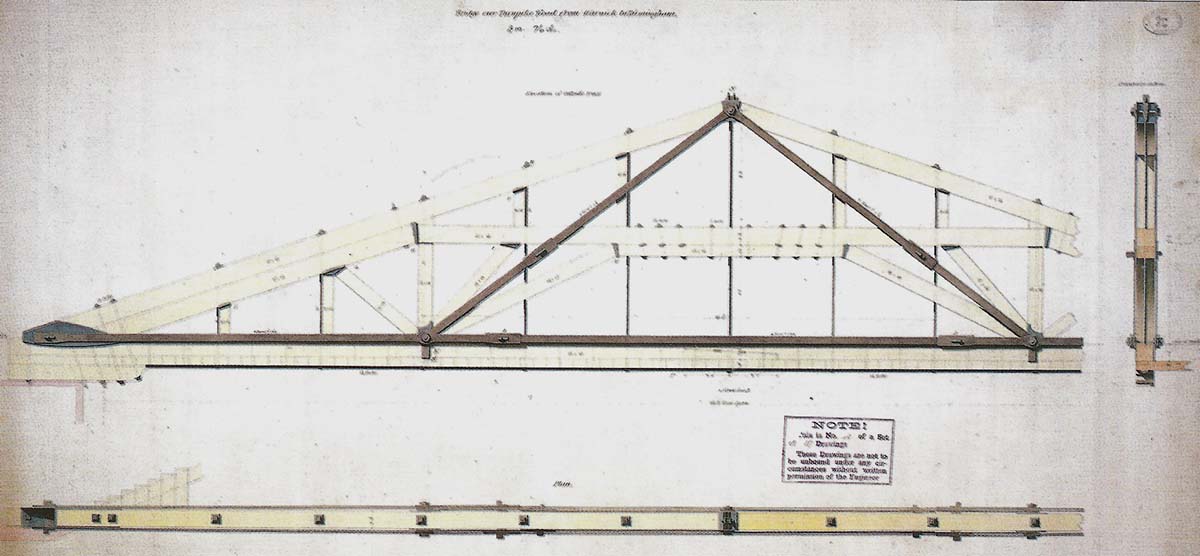|
|
 |
 |
|
GWR Route: Banbury to Wolverhampton
Olton Station: gwro2693
 |
At Olton, Brunel designed a timber bridge to span the
Birmingham to Warwick Turnpike road. The railway crossed the road at an extreme
skew resulting in a bridge span of nearly 94 feet being required to cross the
road. Board of Trade Regulations required bridges over turnpikes to be at least
35 feet wide measured on the square or at right angles to the direction of the
road when the bridge was on a skew. Timber bridges were a common feature on
Britain’s early railways as wood was in plentiful supply, making timber
bridges cheaper to construct than wrought iron bridges. Unlike other civil
engineers of the period, Brunel disliked using cast iron for bridge beams
because he considered it to be weak under tension and of brittle nature,
resulting in sudden failures. This stance was vindicated by the Royal
Commission set up to investigate the Dee Bridge failure in May 1847. At Olton,
this timber bridge was never built and instead a wrought iron plate girder
bridge with a bowed balloon top was constructed. (see image 'gwro2695' and gwro2692').
Robert Ferris
 back back

|
|
|
